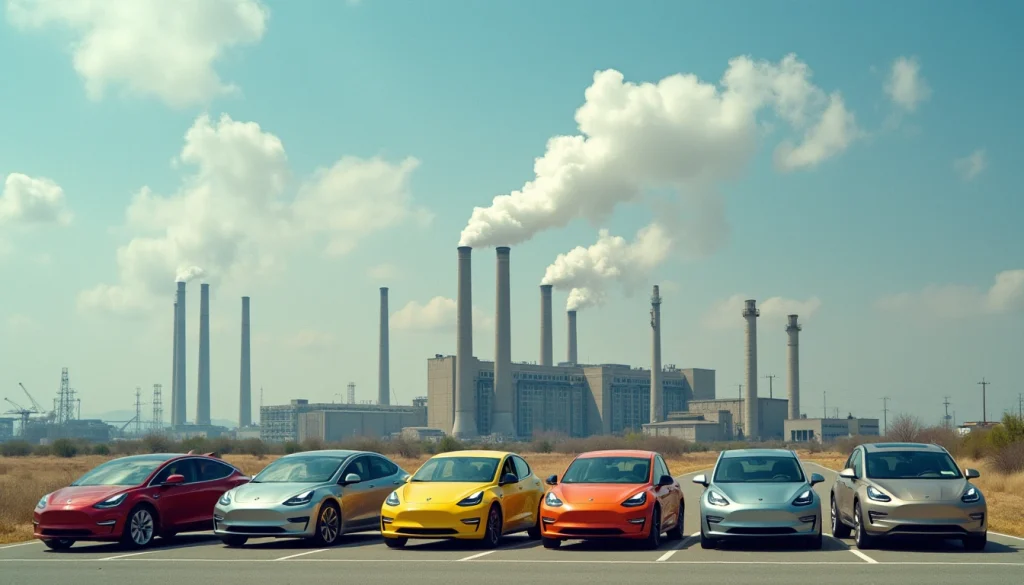As climate change continues to pose a significant threat to the planet, European countries have united in their efforts to combat this global issue. The European Union (EU) has set an ambitious target of achieving net-zero carbon emissions by 2050, marking a crucial step toward mitigating the impacts of climate change and transitioning to a sustainable future.
Net-zero carbon emissions refer to balancing out the amount of greenhouse gases emitted with the amount removed from the atmosphere. This means that while some emissions may still occur in certain sectors, they are offset through various methods such as reforestation, capturing and storing CO2, or using renewable energy sources.
The EU’s commitment to net-zero by 2050 is part of its broader climate strategy outlined in the European Green Deal. This comprehensive plan aims to make Europe the first climate-neutral continent by mid-century while ensuring a just transition for workers and regions heavily reliant on fossil fuels.
To meet the net-zero target, European countries are employing various strategies across different sectors of their economies:
The energy sector is a significant contributor to greenhouse gas emissions. Europe’s strategy involves transitioning away from fossil fuels and toward renewable energy sources such as solar, wind, hydroelectricity, and geothermal power. This shift includes investing in large-scale renewable projects, promoting decentralized energy production through rooftop solar panels on homes, and expanding the use of electric vehicles.
The transportation sector is another major source of emissions. To address this, European countries are focusing on increasing public transport infrastructure, promoting active mobility (walking and cycling), and supporting the adoption of zero-emission vehicles such as electric cars and hydrogen-powered trucks.

Sustainable agriculture practices and land management also play a crucial role in reducing carbon emissions. Farmers can contribute to net-zero by adopting regenerative agricultural techniques that enhance soil health, sequester carbon, and reduce the use of synthetic fertilizers. Additionally, protecting existing forests and promoting reforestation efforts help absorb CO2 from the atmosphere.
European industries are undergoing a significant transformation as they strive for net-zero emissions. This includes increasing energy efficiency in production processes, adopting circular economy principles to minimize waste and maximize resource use, and transitioning to cleaner sources of heat and power such as green hydrogen or biogas.
To support the transition towards a carbon-neutral economy, European countries have implemented various economic instruments:
The EU Emissions Trading System (ETS) is one of the key tools used to put a price on carbon emissions. This cap-and-trade system sets an overall limit on greenhouse gas emissions from certain industries and allows companies to buy and sell allowances within that cap.
Encouraging green investments through sustainable finance initiatives also plays a vital role in achieving net-zero emissions. European countries are working towards aligning their financial systems with climate goals by developing taxonomy frameworks for sustainable activities, promoting green bonds, and supporting low-carbon technologies.
While Europe has made significant strides towards its net-zero target, there is still much work to be done:
The share of renewable energy in the EU’s electricity mix has been increasing steadily over recent years. However, further investments are needed to scale up production and ensure a stable supply.
Europe’s greenhouse gas emissions have declined overall since 1990 due to various climate policies and economic changes. Yet, some sectors like transport remain challenging areas where deeper emission cuts are necessary for the EU to stay on track towards net-zero by 2050.
As Europe moves away from fossil fuels, it must ensure a just transition that supports workers and communities affected by these changes. This includes providing training opportunities for new jobs in green industries and implementing social protection measures to minimize economic disruption.
Innovative technologies will be crucial for reaching net-zero emissions, particularly in hard-to-abate sectors like heavy industry or long-distance transport. Continued investment in research and development is essential to unlock these solutions at scale.
Europe’s commitment to achieving net-zero carbon emissions by 2050 represents a monumental undertaking that requires transformative changes across all aspects of society. While progress has been made, there remain significant challenges ahead. However, with continued political will, technological innovation, and public engagement, the EU can serve as a global leader in creating a sustainable future for generations to come.
